Journal of the NACAA
ISSN 2158-9429
Volume 4, Issue 2 - November, 2011
Whitefly Population Dynamics on the Interface of Uurban and Agricultural Areas in Yuma, Arizona
- Bealmear, S., Assistant Agent, The University Of Arizona
Nolte, K., Extension Agent, Agriculture, The University of Arizona
ABSTRACT
An experiment was performed in 2008 and 2009 on whitefly population dynamics in Yuma, AZ, with two objectives, 1) to understand the nature and distribution of whiteflies within an urban setting, 2) the impact of surrounding agricultural areas on whitefly population densities and movement within an urban center? To answer these questions, yellow sticky traps (30x15 cm) were placed on the ag/urban interface as well as within the City of Yuma in a regional scheme. Traps were collected and replaced biweekly. In 2008 and 2009, regions adjacent to larger areas of agricultural had higher numbers of whiteflies than regions adjacent to smaller areas of agriculture.
Introduction
The sweetpotato whitefly, Bemisia tabaci, has emerged as a serious economic threat to cucurbit crops in the desert Southwest (Palumbo et al, 1995). Cucurbit Yellow Stunting Disorder Virus (CYSDV), a crinivirus vectored by the insect causes symptoms of interveinal chlorosis with chlorotic spots, shortened internodes, leaf brittleness and plant death. In fall melon crop of 2007 over 85% of melon acreage was affected by the disease, and over one third of the crop was lost in 2008 and 2009 (Blake, 2010). Whiteflies are also a large pest in urban areas of Yuma on ornamental and vegetable gardens. Both of these facts lead to questions about whitefly populations and where they originate. Do they come from agriculture and move into urban areas or vice versa? As it was not known how urban whitefly movement is influenced by surrounding agriculture, the ag/urban interface and the City of Yuma were added to a whitefly trap line that included 122 traps, covering an area of over 214,000 acres. This publication will focus primarily on whitefly population dynamics within the ag/urban interface and the City of Yuma. The objectives of this research were 1) to understand the nature and distribution of whiteflies within an urban setting, 2) the impact of surrounding agricultural areas on whitefly population densities and movement within an urban center?
Materials and Methods
Twenty yellow sticky traps (30 x 15 cm) (Olson Products Inc., Medina, OH, USA) were placed in the city of Yuma on March 21, 2008 (Figure 1). Traps were evenly distributed in six regions; North Central (N), Northwest (NW), Northeast (NE), South Central (S), Southwest (SW) and Southeast (SE) throughout the city and its interface with agriculture. Traps were specifically located within the urban setting to measure the agricultural influence of whitefly dispersal. (Figure 2). Traps were collected and replaced biweekly. The numbers of whiteflies were counted using a dissecting microscope. The data was analyzed in SAS software (SAS Institute, Cary, NC, USA) using proc means and proc glm (ANOVA).
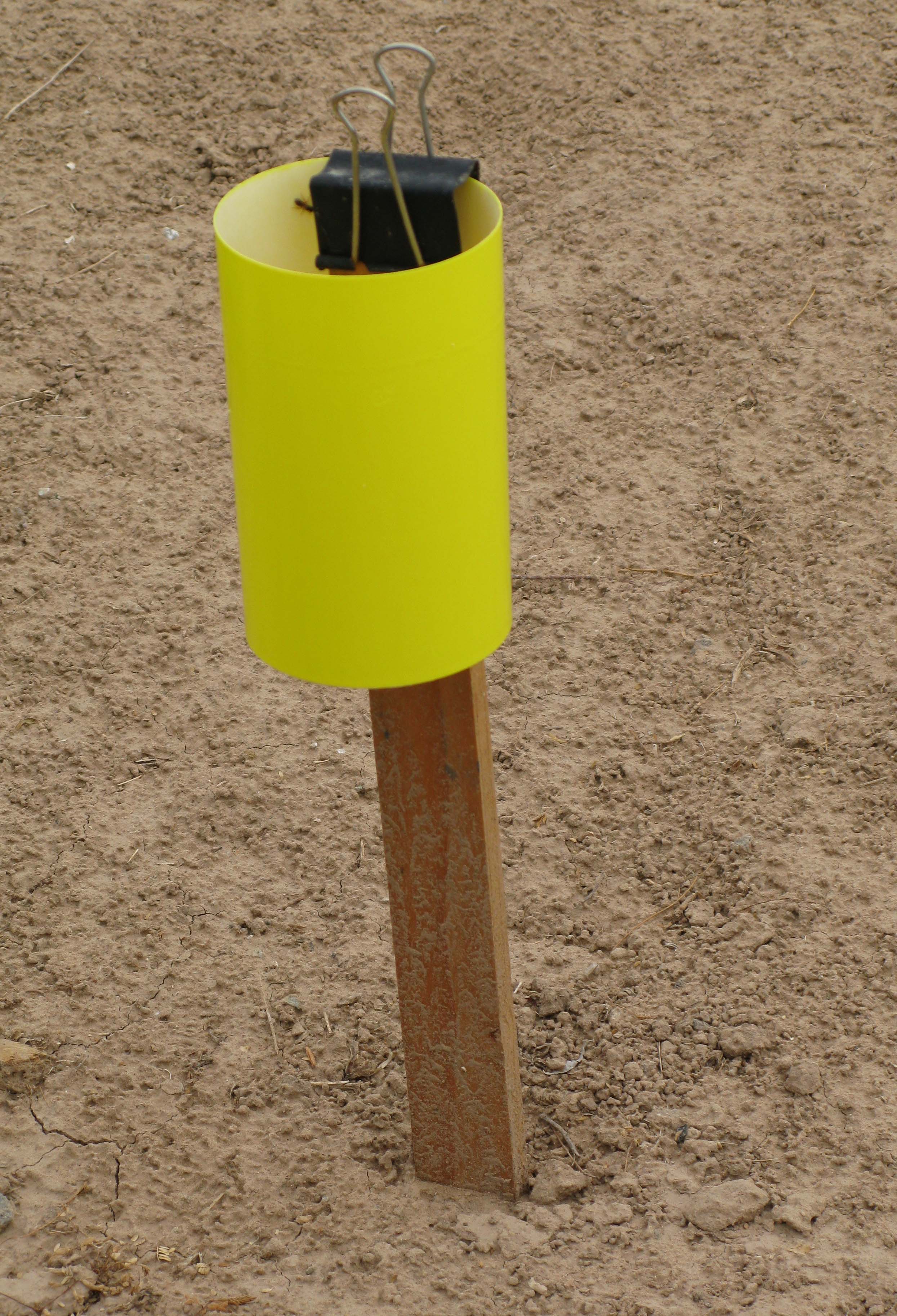
Figure 1: Yellow sticky trap

Figure 2: City of Yuma yellow sticky trap layout. Note: The ag/urban interface locations (black squares) relative to traps located in the City of Yuma Locations (white squares).
Results
Year to year variability was seen in peak whitefly populations in 2008 and 2009 (Figure 3). Means in 2008 were uniformly consistent, averaging 1000 whitefly/trap per month from May through August with a gradual decline in population during September and October. While in 2009, populations started to increase in June, populations did not rise as drastically as 2008, and whitefly populations did not peak until September, and fell sharply in October (Figure 3). Regional differences in the mean whitefly numbers were observed during the months of May through October (Figure 4). There were significant differences between the means of each region in 2008 and 2009 (P=.0002 P=.0016, respectively) (Figure 4). In 2008, the Northwest and Southwest regions had significantly more whiteflies than the North central, Northeast and Southeast. Although the Northwest region was not significantly different than the South Central, the Southwest did have significantly more whiteflies than the South Central region. Overall, the Northwest and Southwest regions (areas of enhanced agricultural activity) had the highest numbers of whiteflies (Figure 5). In 2009, the Northwest and Southwest areas had significantly more whiteflies than the North Central and Northeast but not the South Central or Southeast. As in 2008, the Northwest and Southwest regions had the highest number of whiteflies in 2009 (Figure 6). When we examined the whitefly means within the two different locations (ag/urban Interface and city) there were significant differences. In May-October of 2008 and 2009 there were greater number of whiteflies found in the City of Yuma than in the Ag-Urban interface (P<.0001) (Figure 7). 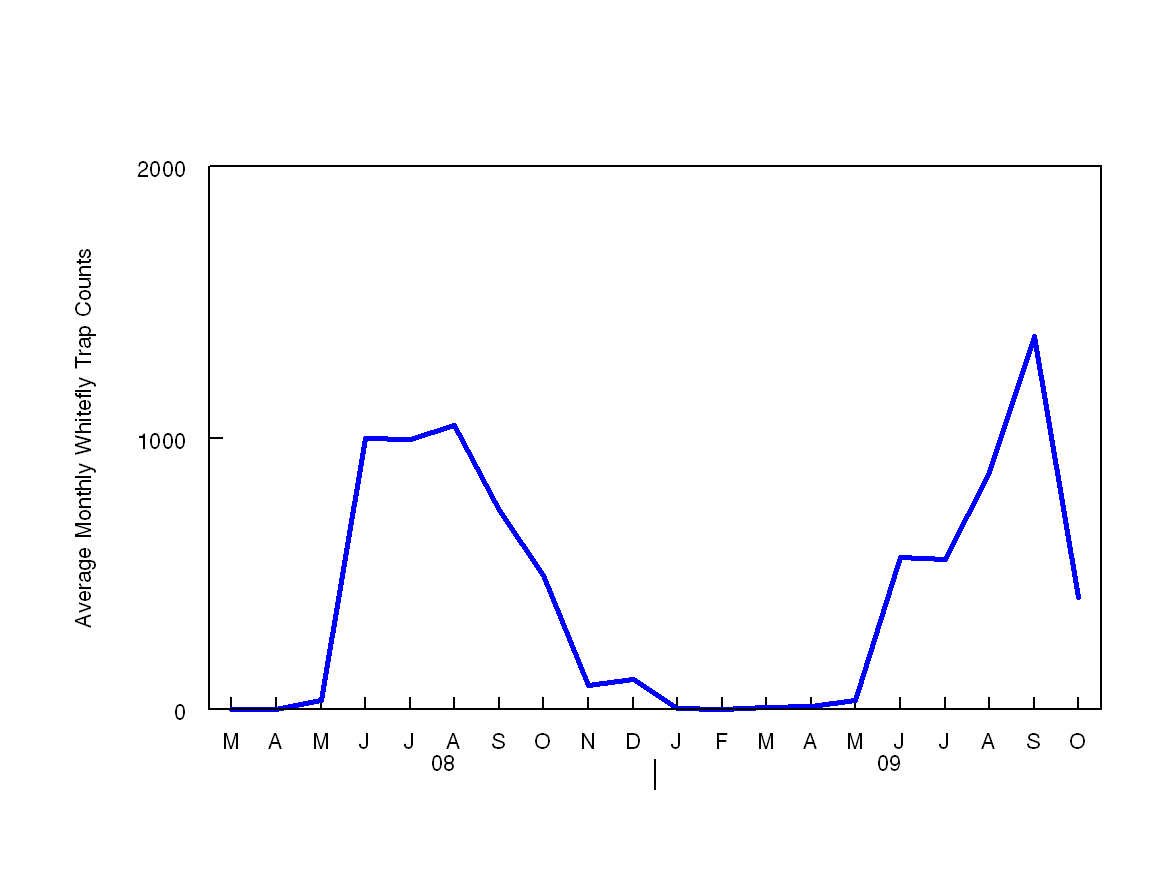
Figure 3: Mean whitefly numbers for 2008 and 2009.
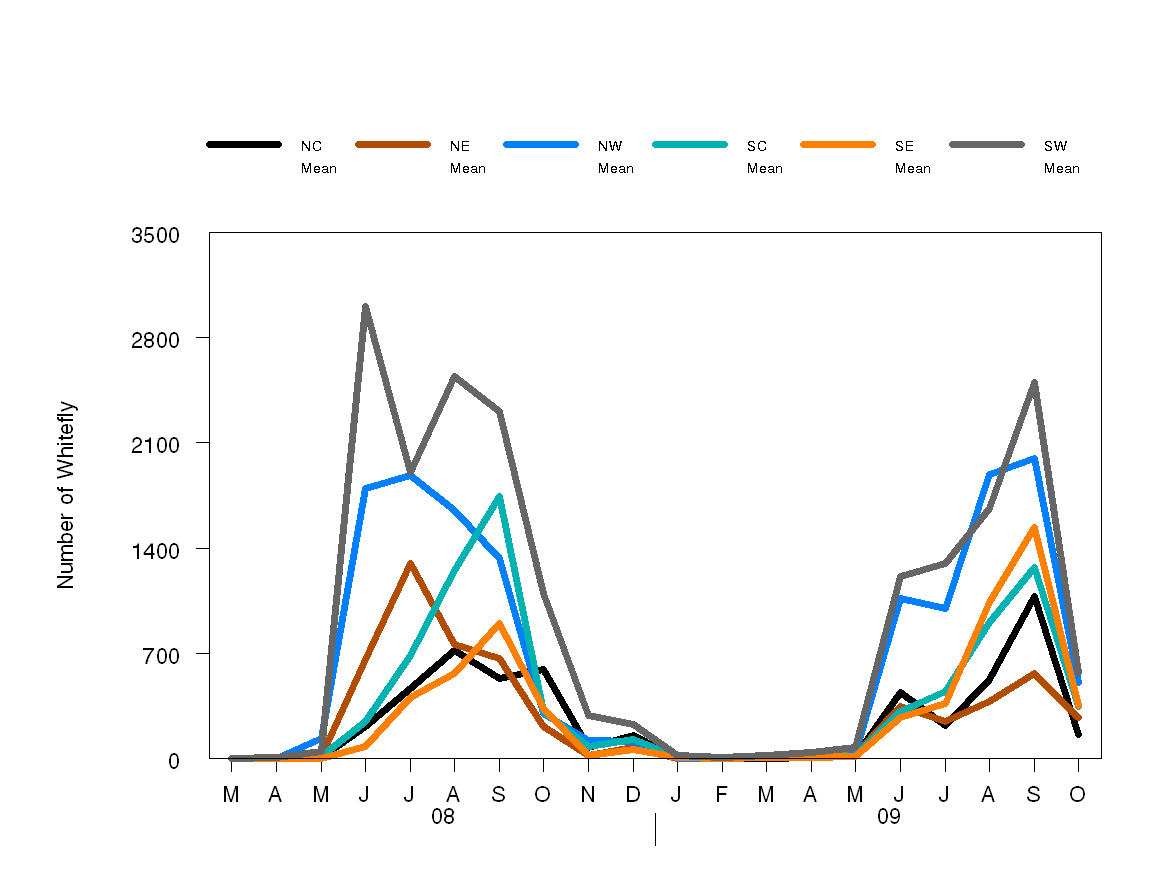 Figure 4: Mean number of whiteflies for each month in each region.
Figure 4: Mean number of whiteflies for each month in each region.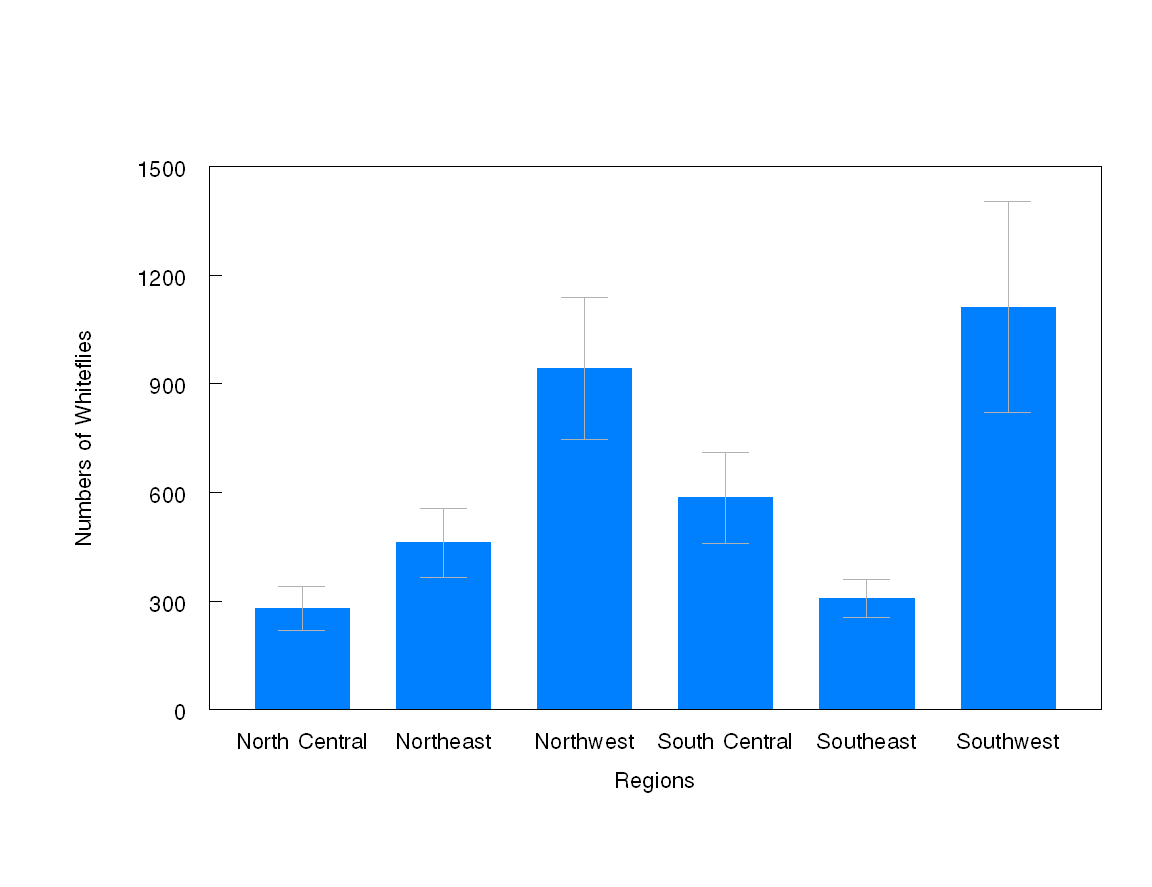
Figure 5: Mean number of whiteflies in the six different regions in 2008.
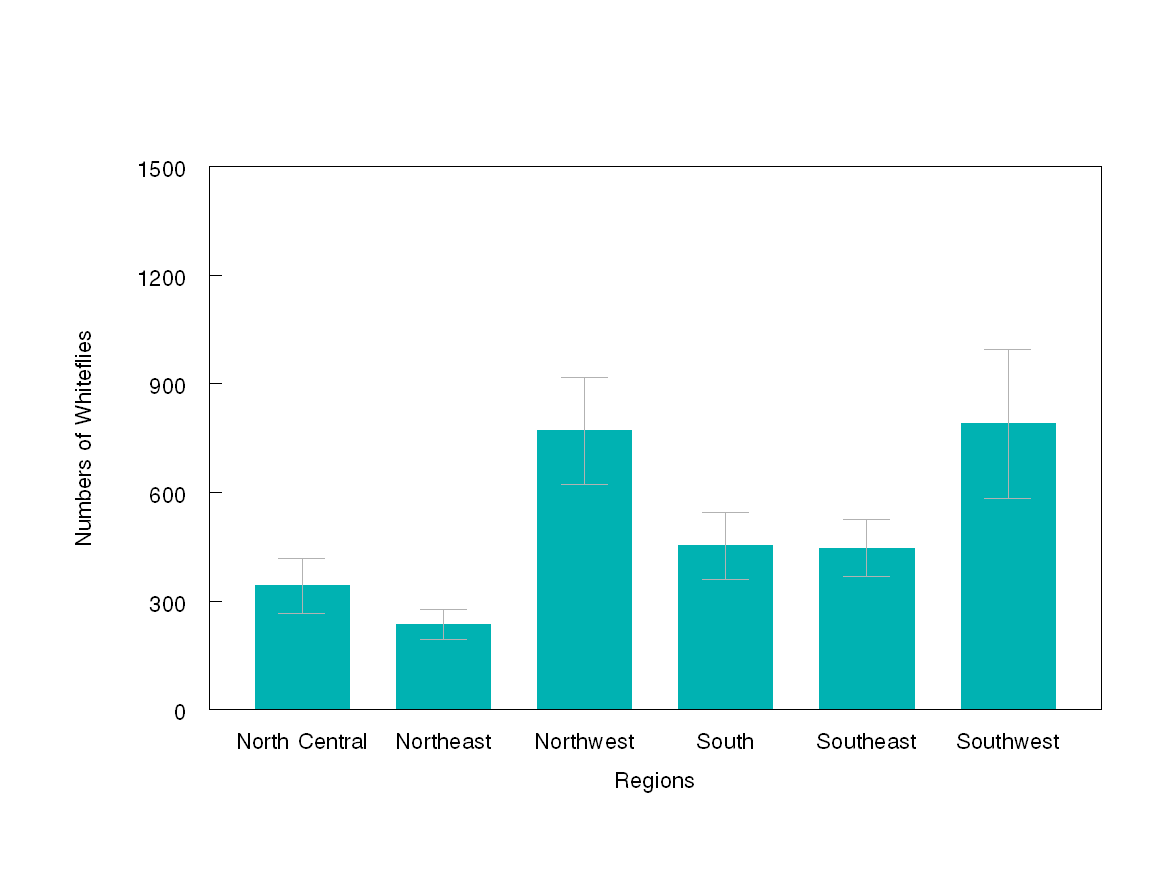
Figure 6: Mean number of whiteflies in the six different regions in 2009.
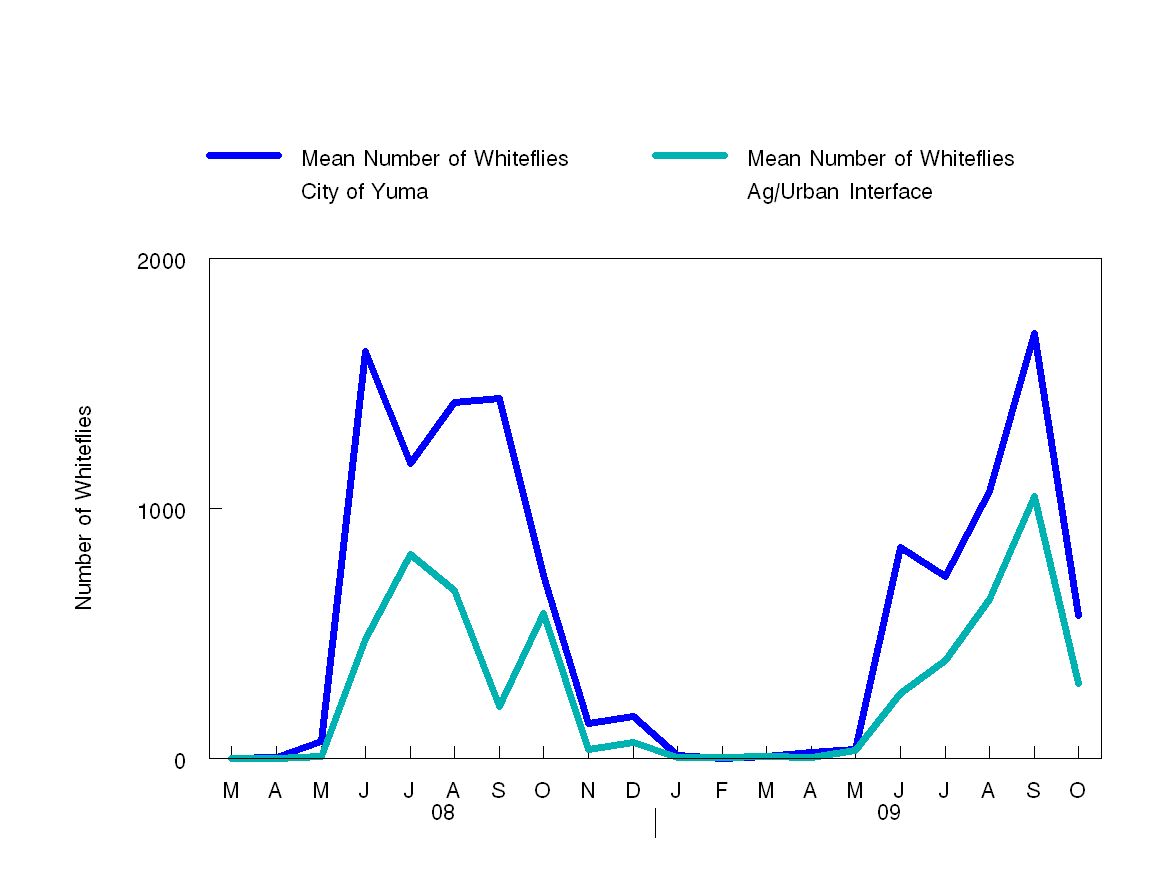
Figure 7: Mean number of whiteflies on the ag/urban interface and in the City of Yuma.
Discussion
These results show that whiteflies are most active from May through October, when the temperatures are hottest. It also shows there are more whiteflies in the City of Yuma than on the ag/urban interface. This could lead to the assumption that whiteflies are building up in the city and moving into agriculture, but regions with less agricultural acreage had the lowest numbers of whiteflies (North Central and Northeast). When we looked at the mean numbers of whiteflies by region there is a trend of higher numbers of whiteflies adjacent to more acreage of agriculture. As a result it appears that agriculture does have a direct impact on the distribution of whiteflies within an urban setting. Moreover, higher numbers of whiteflies in the city shows that whiteflies could move from agriculture into the urban areas, feed on ornamental plants and multiply. Surrounding agricultural areas do have an immediate impact on whitefly population densities within an urban center.
The notion of agriculture and its influence on surrounding areas was not unexpected. Work involving lygus management in cotton (Diehl et al., 1998), the control of thrips in deciduous fruits (Coviello et al., 2000) and, more specifically, the aseasonal dispersal of whitefly as a result of cotton management (Ellsworth et al., 2006) suggests that the patterns of insect movement can have a profound effect on neighboring areas. The work presented here expands this concept to include the dynamic involving a populated urban center. Once whiteflies arrive, their populations likely feed on ornamental plants, multiply, and plague homeowners, landscapers and urban gardeners.
Acknowledgements
This grant was funded by The Arizona Pest Management Center. The authors thank Tony Tellez and Gerardo Villegas for their assistance during this project.
References
Adams, R.G. Yellow sticky traps for whitefly mangament. Connecticut greenhouse newsletter-University of Connecticut, Cooperative Extension Service. May 1981. (105). P. 4-6.
Blake, C. CYSDV Management in Desert Melons. Western Farm Press, Volume 32, August 2, 2010. http://westernfarmpress.com/management/cysdv-management-desert-melons. Date Accessed, October 15, 2011.
Byrne, D.N., Von Bretzel, P.K. Hoffman, C.J. Impact of trap design and place when when monitor for the bandedwinged whitefly and the sweetpotato whitefly (Homoptera: Alyroidiae). Environmental Entomology. April 1989. 12(2) p. 300-304.
Chu, Chang-Chi, E. Barnes, E. Natwick, T. Chen, D. Ritter, and T. Henneberry (2007). Trap catches of the sweetpotato whitefly (Homoptera: Aleyrodidae) in the Imperial Valley, California, from 1996 to 2002. Insect Science 14 (2), 165–170.
Coviello, R., R.E. Rice and K. Day. Thrips Control on Fresh Shipping Fruit. Plant Protection Quarterly, 10(2): 7-9.
Diehl, J., P. Ellsworth, and L. Moore. 1998. Lygus in Cotton: Identification, Biology and Management. IPM Series Number 1. The University of Arizona, Cooperative Extension, Tucson, Arizona. 2pp.
Ellsworth, P., J. C. Palumbo, S.E. Naranjo, T.J. Dennehy, and R.J. Nichols. 2006. Whitefly Management in Arizona Cotton, 2006. IPM Series Number 18. The University of Arizona, Cooperative Extension, Publication #AZ1404. Tucson, Arizona. 4pp. URL: http://ag.arizona.edu/pubs/insects/az1404.pdf.
Gillespie, D.R., Quiring, D. Yellow sticky traps for detecting and monitoring greenhouse whitefly (Homoptera: Aleyrodidae) adults on greenhouse tomato crops. Journal of Economic Entomology. June 1987. 80(3) p. 675-679.
Musuna, A.C.Z. A method for monitoring whitefly, Bennisia tacaci (Genn.), in cotton in Zimbabwe. Agriculture, ecosystems and environment. Aug. 1986. 17 (1-2) p. 29-35.
Natwick, E.T., Zalom, F.G. Surveying sweetpotato whitefly in the Imperial Valley. California agriculture- California Agricultural Experiment Station. Mar/Apr 1984. 38(3-4) p. 11.
Palumbo, J.C., Tonhasca, A. and Byrne, D.N. Evaluation of Three Sampling Methods for Examining Adult Sweetpotato whitefly (Homoptera: Aleyrodidae) Abundance on Cantaloupes. Journal of Economic Entomology. October 1995. 88(5) p. 1393-1400.
